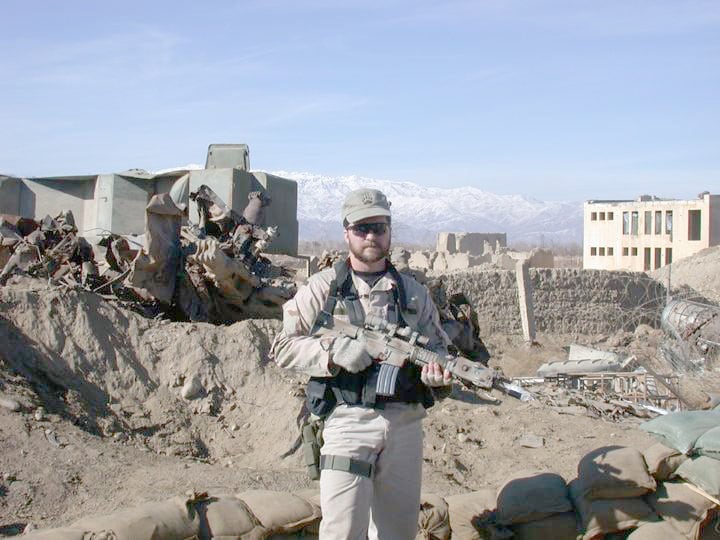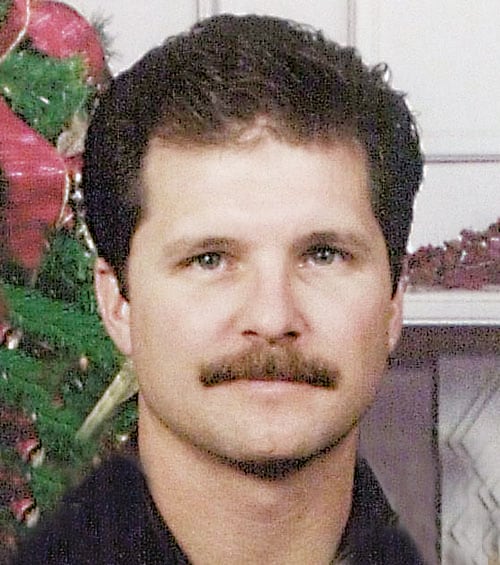Tech. Sgt. John Chapman, the combat controller who was killed during the fierce Battle of Roberts Ridge in Afghanistan in 2002, will be posthumously awarded the Medal of Honor, according to a report in Task and Purpose.
Chapman would be the first airman to receive a Medal of Honor, the nation’s highest award for valor, for actions since the Vietnam War.
Chapman originally received an Air Force Cross, the second-highest valor award an airman can receive, for his heroism during the March 4, 2002, battle against al Qaida fighters.
But newly-enhanced video from a Predator drone showed more evidence that Chapman was not dead, but instead unconscious, when a team of Navy SEALs withdrew from the battle under withering fire.
The video analysis suggested Chapman regained consciousness and resumed fighting al Qaida members approaching on three sides. Chapman is believed to have crawled into a bunker, shot and killed an enemy fighter charging at him, and killed another enemy fighter in hand-to-hand combat.
This new evidence prompted former Air Force Secretary Deborah Lee James in 2016 to recommend his Air Force Cross be upgraded to the Medal of Honor.
RELATED

The Air Force and the White House on Friday evening would not confirm to Air Force Times whether Chapman would receive the Medal of Honor.
According to the citation for his Air Force Cross, a helicopter inserting Chapman and other troops came under heavy machine gun fire, and was directly hit by a rocket-propelled grenade, causing a SEAL to fall from the helicopter.
The helicopter left the area and made an emergency landing seven kilometers away, the citation said. Chapman contacted an AC-130 gunship to secure the area and provide close-air support for the team, and then directed the gunship to look for the missing SEAL.
Chapman also “requested, coordinated and controlled the helicopter that extracted the stranded team and aircrew members,” the citation said, which limited how much hostile fire the aircrew and team were exposed to.
“Without regard for his own life, Sergeant Chapman volunteered to rescue his missing team member from an enemy stronghold,” the citation said.

Chapman killed two enemy fighters, and continued advancing to the enemy position. He then engaged a dug-in machine gun nest, at which point the rescue team came under fire from three directions, the citation said.
Chapman exchanged fire with the al Qaida members at close range, with little cover, “until he succumbed to multiple wounds,” the original Air Force Cross citation said.
“In his own words, his Navy [SEAL] team leader credits Sergeant Chapman unequivocally with saving the lives of the entire rescue team. Through his extraordinary heroism, superb airmanship, aggressiveness in the face of the enemy, and the dedication to the service of his country, Sergeant Chapman reflects the highest credit upon himself and the United States Air Force.”
But it now appears he did not die at that point in the battle.
The New York Times reported in 2016 that the Air Force’s autopsy analysis found evidence that Chapman woke up and continued fighting. The bullets that killed Chapman struck him at an angle that would have been impossible if he had been lying dead in the position where the SEALs thought he fell.
The autopsy analysis also found he had bruises on his forehead, which he could not have received if he was dead, bolstering the theory that he was instead knocked unconscious.
Rep. Duncan Hunter, R-California, also sent James a letter in 2016 urging Chapman be awarded the Medal of Honor.
“Sgt. Chapman is an American hero who demonstrated courage and selflessness against extraordinary odds and certain death,” Hunter said in the 2016 letter.
Air Force Chief of Staff Gen. Dave Goldfein has a framed tribute to Chapman hanging in his Pentagon office, as well as a propeller from Wildfire 54, the MQ-1 Predator that flew over Roberts Ridge during that battle.
Chapman was the first combat controller in history to earn the Air Force Cross.
Stephen Losey is the air warfare reporter for Defense News. He previously covered leadership and personnel issues at Air Force Times, and the Pentagon, special operations and air warfare at Military.com. He has traveled to the Middle East to cover U.S. Air Force operations.




